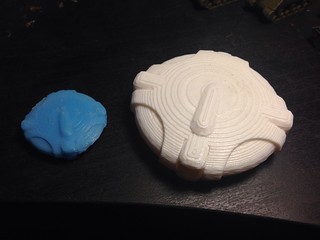I thought it would be helpful (mostly just for me) to list out the status of my current projects. So, here’s where I am:
Traveling 3D Printer Show
My printer has been to Maker Faires, Science Days, and even a Science Fair at a local elementary school. I won’t be able to make it to NoVa Mini Maker Faire (but you should go if you can!), but I will be at Rockville Science Day.
My exhibit has seen many, many small hands, and suffered much attrition. Pikachu finally walked (I’m shocked it took this long), the T-Rex skull’s lower jaw broke, and Bulbasaur has some, ahem, structural issues. I am hoping to re-print some of these really popular models before my next event.
Maker’s Notebook
This one is a project for school, but I’m hoping that my group will continue development on it after we finish in the spring; it has the potential to be a really useful product. The Maker’s Notebook is a webapp that elicits project planning and multimedia documentation. It’s sort of like a science notebook, but for engineers or makers. We’re designing it for use in classrooms/afterschool maker clubs, but it really could be used by anyone (when it works, that is).
Pip-boy
A friend is putting together a Vault Boy costume and asked for a Pip-Boy for it. I missed the dates of the con he wanted it for due to a bad belt on the printer, but I’m still working on it for future cosplay fun. I’m using these models to create a Pip-Boy that can be used with a mobile phone for the screen. It’s a complex project with many pieces to print, but overall really well designed. My current holdup is that one of the files causes Slic3r to crash. Next steps: Check for Slic3r updates; use alternative slicing engine like Cura.
SLA Printer
This is a really exciting project that I got very close to the printing stage. The software, firmware, and electronics are all in place, and the remaining issue is the design and construction of the vat. Once I have that settled, it’s just fine tuning and tweaking. However, epoxies and resins are generally nasty substances, and they get nastier when they are curing (although they’re generally inert afterwards). Exposure at hobbyist-levels is a risk I’m willing to take under typical circumstances, but I’m not going to be playing with any resins or epoxies while I’m pregnant, so this one is going on the shelf for a while.






